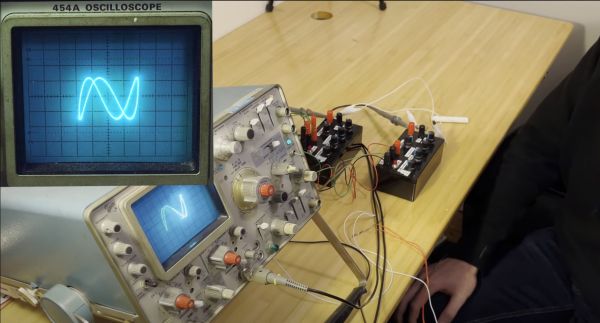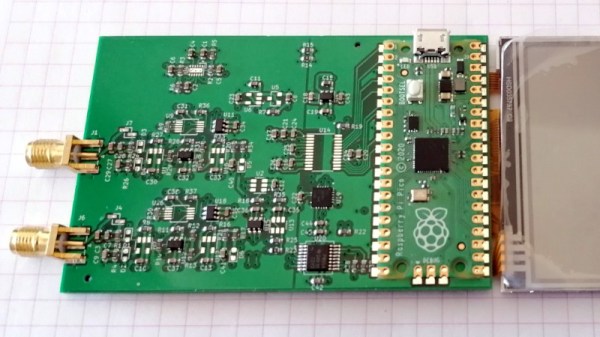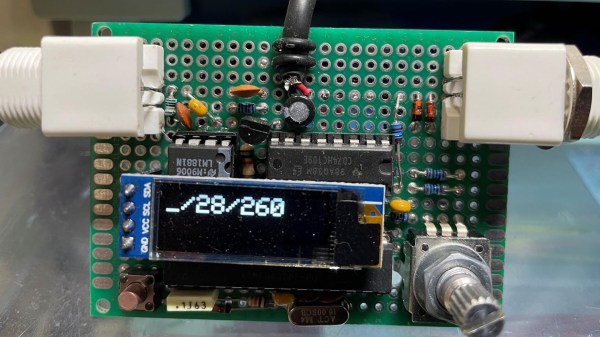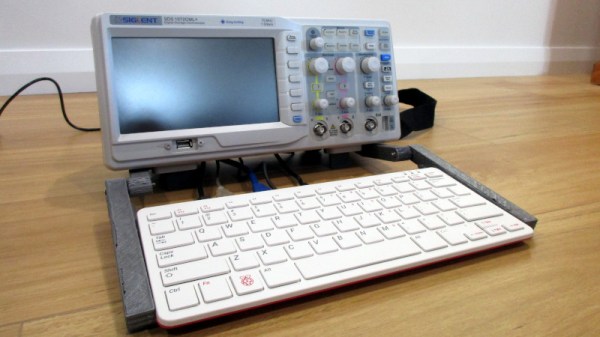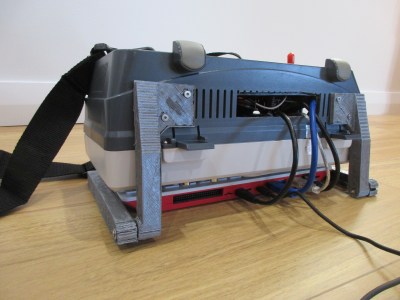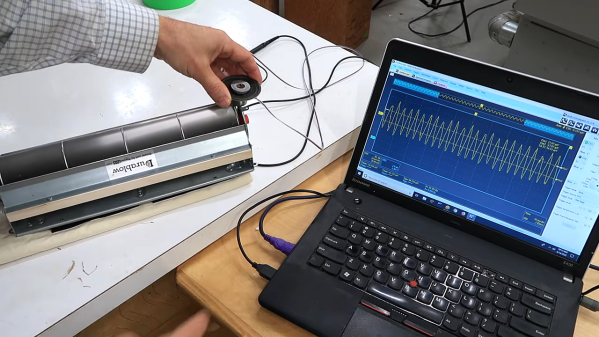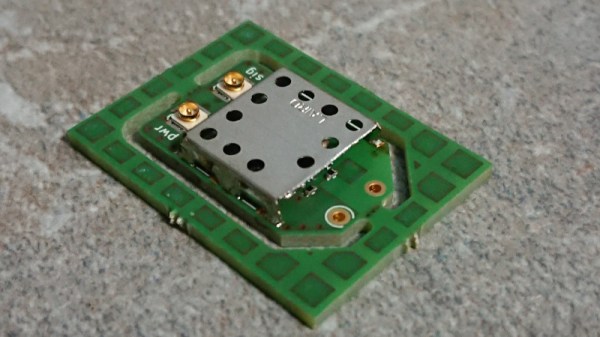Generating interesting imagery on an analog oscilloscope is a fun activity enjoyed by many, with an excellent demonstration by [Henry Segerman] provided in a recent video which covers [Matthias Goerner]’s demonstration. Using the electron beam, shapes can be drawn onto the phosphor of the oscilloscope’s CRT — all without touching any digital circuitry. At the core are analog components like an operational amplifier integrator, multipliers and other elements.
With just a number of these simple components in a circuit, it’s possible to draw a wide variety of shapes, all by applying the appropriate trigonometric parameters. In addition to the drawing of shapes, it is also demonstrated how these analog signals can be used for an analog audio synthesizer, and finally the image displayed on the oscilloscope is captured on Kodak (Polaroid) instant film, making the entire generating, processing and capturing chain fully analog.
While we’d be the last to campaign against digital electronics, it is fascinating to consider just how much can be done with analog electronics and a bit of mathematics. We assume that everyone did pay attention during math classes, making this a perfect chance to use all that knowledge of trigonometry.
Continue reading “Drawing Knots On An Oscilloscope Using Analog Means”

